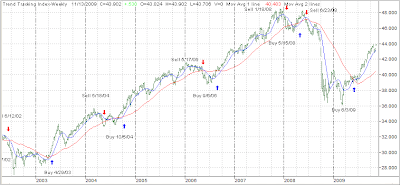 Reader GH had an interesting comment about the effectiveness of sell stops:
Reader GH had an interesting comment about the effectiveness of sell stops:
I’m afraid that the sell-stop methodology is going to become a problem for investors.
In my view it is going to start a new trend of “churning.” Churning used to exist when an advisor traded a client’s account excessively. Now churning is going to define the behavior of the individual investor who is bent on protecting himself, playing defense.
Recently, I was speaking with a 40-ish mother of two grown children who remarked that her and her husband were seeing the importance of taking a more hands-on approach to their 401K’s. When I mentioned the concept of sell-stops she said her husband had just enrolled in a class that taught sell-stops.
That’s the point I’m trying to make. Wall Street knows that more and more people are going to use tools like this to protect themselves. And Wall Street knows about 7% to 10% drops trigger stops. Brokerages are going to prosper, at the expense of so-called “investors.”
The words “investing” and the “stock market” can no longer be used in the same sentence. It’s more of a casino than ever before.
Your retirement will depend mostly on your savings, not how much you can make on your savings. Wall Street has it figured before you ever get the chance to sell-stop.
While I agree with your statement that your retirement should depend mainly on your savings, and only secondary on the gains you make from your investments, I don’t believe that the use of sell stops will increase the incidents of churning.
Having said that, I have also repeatedly warned against placing sell stops ahead of time (for ETFs), since front running can create this kind of unintended churning as your sell stops are a known fact. I’ve talked about that in “Front Runners” a couple of weeks ago.
However, if you, as I recommend, base your trailing sell stop points on day-end closing prices for ETFs as well, and only enter the order the following day after your stop has been triggered, you will eliminate advance knowledge of your intentions.
Sure, as is the case with all investment methods and approaches, nothing is perfect and neither are sell stops. However, in my book it’s the best thing you can do to protect yourself from portfolio disaster.
Looking back, I did not get the impression that any churning was involved last year, nor did I feel in any way taken advantage of, when we liquidated millions of dollars of positions leading up to our final sell date of 6/23/08.






